Ad angles (or hooks) are often the key to capturing audience attention in an environment where there are hundreds of other companies all competing for the same spending power.
With the right angle, you boost your chances of a sale, and can even create a deeper relationship between you and your customer. Unfortunately, a lot of advertisers don’t know where to start when generating ad angles.
Fortunately, we’re here to help.
By the time you’re finished reading, you’ll know what ad angles are, why they’re valuable to your brand, and how you can use them to increase your chances of sales.
What is an Ad Angle?
Starting with the basics, an ad angle or hook is the intriguing element in your sales pitch, marketing campaign, or brand growth strategy. It’s essentially the thing that captures your customer’s attention and forces them to take notice.
Ad angles focus on the most pressing issues that your customers are facing or the goals that they want to achieve. For instance, if you’re a company selling email marketing software, you might publish a marketing campaign on how to convert customers with email.
This campaign would address the problem of your target audience, but it also highlights the value of your brand with insights into what your software can do to help them achieve their goals. This hooks the reader into a deeper connection with the business.
Why are Ad Angles Important?
Ad angles highlight the purpose of your marketing campaign.
These hooks grab your audience’s attention by showing them exactly what value you’re offering. For instance, in this SEMrush ad, the company is answering an important question for its target customer, and promising insight.
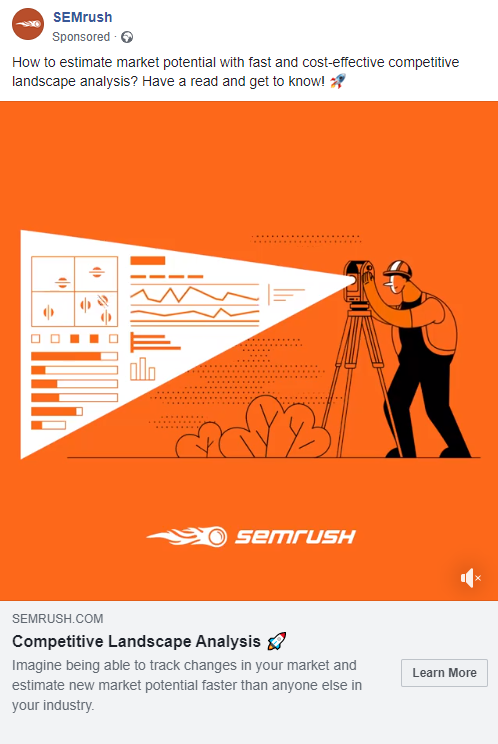
Aside from just grabbing attention, the ad also immediately demonstrates the value of the company as a thought leader.
Once you’re clear on your angle, it’s a lot easier to pick the right message to send in your campaigns. The angle will direct you through your marketing project while giving your customers a reason to connect with your business.
What You Need to Know Before Writing Ad Angles
Ad angles are an excellent way to give your advertising efforts direction and purpose.
However, it’s essential to know precisely what you’re trying to achieve with these tools.
For instance:
- An ad angle should always highlight a problem you solve for your customer
- Your angles are informed by both your target audience and your brand mission
- Testing your ad angles improve your chances of getting a great ROI
- The more you get to know your customers, the more your angles will evolve
- You will need multiple ad angles to appeal to different customer segments
- A single angle can inform multiple campaigns
How to Create the Best Ad Angles (Step by Step)
Now we come to the point of creating your own ad angles.
Usually, the best way to get started is to research your market and speak to your audience. Researching your industry will show you what kind of hooks your competitors are using to capture audience attention.
On the other hand, talking to your audience will mean that you’re building your campaigns based on genuine knowledge, instead of assumptions.
So, where do you get started?
Step 1: Know Your Audience
Just like in fishing, to catch your audience with the right hook, you need to know precisely what kind of customer you’re hunting for. Your customer persons determine everything from your tone of voice to the kind of problems you need to solve.
If you don’t have your own buyer personas yet, start by creating one.
You’ll need to cover things like, where your customers are located, what their goals might be, what their likes and dislikes are, and more. The more detailed you can get with your user personas, the more personalized your messages become.
Remember, perhaps the most critical question to ask when creating your personas is “What is the problem this person is trying to solve?”
Step 2: Know the Benefits of Your Products/Services
Once you know your audience, the next step is understanding the benefits that your products or services can offer.
For instance, Shopify knows that its customers are companies that are keen to get their sites up and running so that they can sell online. However, they also know that their customers are looking for something easy to use. After all, business owners don’t have a lot of time to work with complicated software and tools:
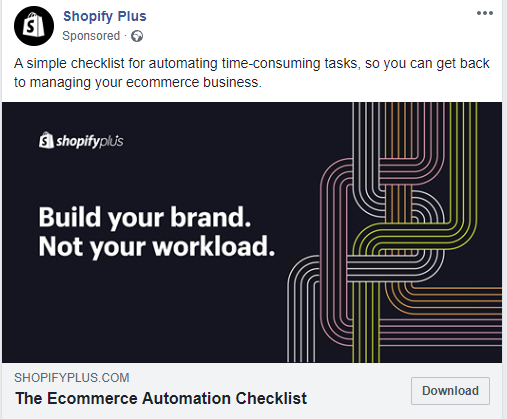
This Facebook ad takes the pain point or “need” of the audience (the desire to build an eCommerce business) and combines it with a unique benefit (simplicity) to create a hook.
Step 3: Anticipate Fears and Problems
The ideal way to hook any customer and convince them to interact with your brand is to show them that you can solve their biggest problems. However, even if you have a great product, you’re still going to need to bypass some of the fears and concerns that your audience has.
For instance, Pipedrive knows that its customer base is made up of people looking to generate more sales. These companies want to solve the problem of having a less than perfect sales pipeline.
Pipedrive uses the phrase “save time, sell more,” to hook readers.

However, to make that hook even more appealing, Pipedrive also considers the concerns that its audience might have about shelling out cash for yet another service. They offer the option to “try it free for 14 days” to eliminate that concern.
Step 4: Highlight Previous Successes
Another issue that could make your ad angle somewhat less appealing, is that all companies can claim to deliver the best services or products in their industry. This often means that customers have a hard time trusting brands to deliver what they promise.
Reports have shown that consumer trust in brands has dropped to an all-time low. Your customers might not instinctively trust what you have to say about your product or service. That means that you need to find a way to prove yourself.
Links to case studies in your ads or marketing campaigns that revolve around real customer success stories are excellent for this purpose. Just like reviews, star-ratings, and testimonials, they prove that to your audience that you’re not all sizzle and no steak.
For instance, Hubspot constantly posts testimonials throughout its website to deliver more peace of mind:
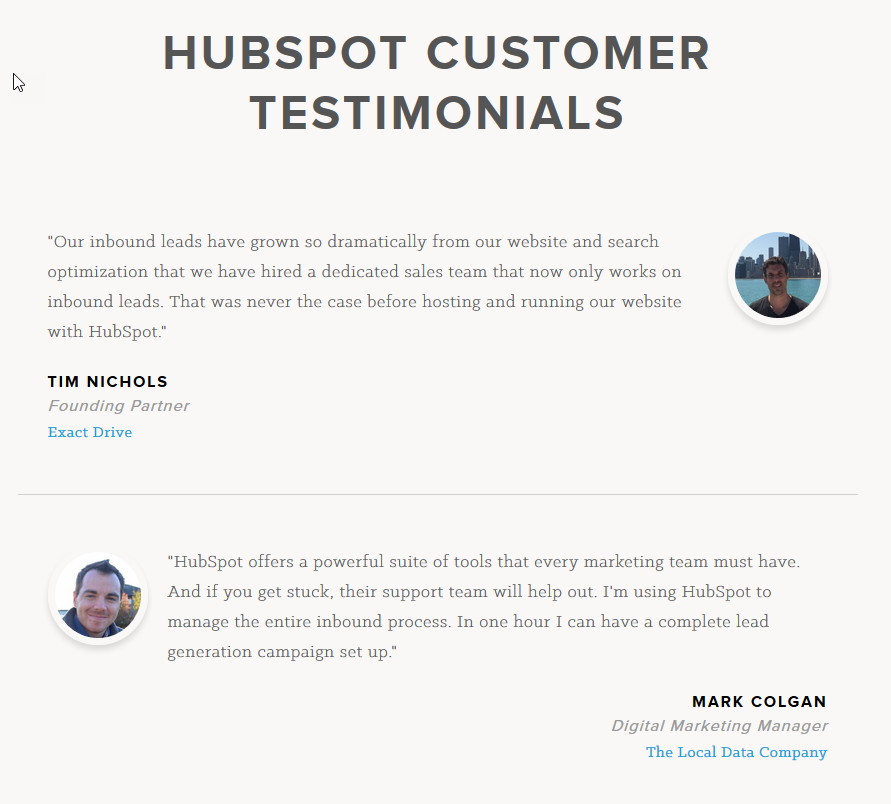
Step 5: Give Your Customers More Choices
Another excellent way to convince your audience that you have just the solution they need is to show them that they can tailor their purchase to their requirements.
All of your clients aren’t going to necessarily take the same approach to business. Some of the people who buy your software will want the best-of-the-best, a full enterprise-sized package that ticks every box their stakeholders might have.
Others will want to start small, accessing simple basic features before gradually adding more modules and functionality to their purchase.
Offering multiple choices in the form of different price points and membership rates means that you can appeal to everyone. Look at MailChimp example, not only do they have a bunch of different pricing packages, but they provide the option to start for free too!

Step 6: Get Attention Quickly
When you’re designing ad angles for your campaigns, it’s important to remember that you’re dealing with customers that have a tiny attention span.
In a world where people are constantly scrolling past promotions and clicking out of websites, it’s up to you to instantly grab attention and keep it. That means that everything from the headline of your campaign, to the first five seconds of your videos, needs to be immediately compelling.
Check out this ad from Kmart for instance – it’s immediately funny and shocking, which ensures that the audience stops and pays attention.
Step 7: Get Emotional
Speaking of making your audience laugh, any ad angle that creates an emotional impact is likely to deliver a higher ROI. Thanks to scientific study, we know that human beings make decisions based on emotion rather than logic. That means that the more emotional you get, the more likely you are to connect with your consumers.
Try:
- Making your audience laugh: A little bit of humor can go a long way. Customers like brands that don’t take themselves too seriously, like Kmart in the ad above, the dollar shave club, or even Wendy’s and it’s famous Twitter page. Just make sure that your jokes hit the right note, you don’t want to be insensitive.
- Tell a story: Emotional stories that embrace feelings like nostalgia or heartache can make a huge difference to the connections that you develop with your audience. Just look at how popular ads by Dove are, for their meaningful commentary on social issues.
- Embrace fear: Fear is a controversial emotion to use in ad hooks, but it works. The idea is to create a fear of “missing out” or FOMO. For instance, telling your audience that they only have a few days to make a purchase, or that they’re running out of time for a discount is a great way to incite fear. Check out this ad from Vistaprint, for instance:

Quick Tips to Improve Your Ad Angles
Still struggling to get the most out of your ad angles?
There are a lot of quick ways to boost your chances of success, just by changing a few basic elements of your campaigns. For instance:
- Use numbers: Use numbers to hook your audience in and show them exactly how much value they’re getting. For instance “7 tips” is better than just “Tips”
- Incite curiosity: Remember that you have to get your audience to feel curious if you want them to connect with your brand. Think about what kind of questions your customers are trying to answer, or what topics interest them.
- Exploit secrets: Show your audience that they can get something that no-one else has from you. Share an exclusive bit of information or highlight the unique skills that your customer can acquire from taking your offer.
- Employ the new: Saying that you have something “new” to share indicates that you’re offering something that your customers don’t already have, like a new method, or a new set of rules.
- Use superlatives: Make sure that you highlight how incredible your offer is by saying it’s the “best” the “biggest” or the “ultimate”.
Examples of Great Ad Angles
Creating the perfect ad angles is like learning how to bait a fishing hook. It’s going to take some significant time and practice before you become an expert. However, once you’ve mastered the craft, you’ll be on your way to a massive pool of potential customers in no time.
Here are some great examples of ad angles to help inspire you.
- SproutSocial: It’s Easy
Everyone wants a solution to their problem, but they don’t want that solution to be complicated. Nobody wants to work hard – especially when there are other companies out there that could offer an easier resolution. Show your audience how simple it can be to work with you.
For instance, SproutSocial claims that it makes social media management easy, delivering the powerful tools that customers want, without the complexity.
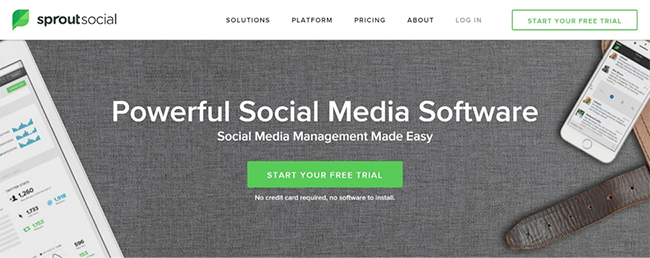
You don’t have to use the words “simple” or “easy” in your copy to convey this ad angle. Saying something like “zero skills required” or letting someone know they can do something “in minutes” has the same impact.
- WordPress: Everyone’s Doing It
Humans are inherently social creatures. According to Yale scholar, Rob Henderson, we all like to be part of a bigger community. Because of this, if you can convince your customers that everyone else is already using your service, then they’ll want to do the same thing.
The key to making the most of this marketing angle is to prove that other people are engaging with your company. This means showing things like case studies and reviews from other clients on your site. Even a specific number or percentage can make more of an impact than just saying “everyone else is already here.” For instance, WordPress points out that it powers 28% of the internet:
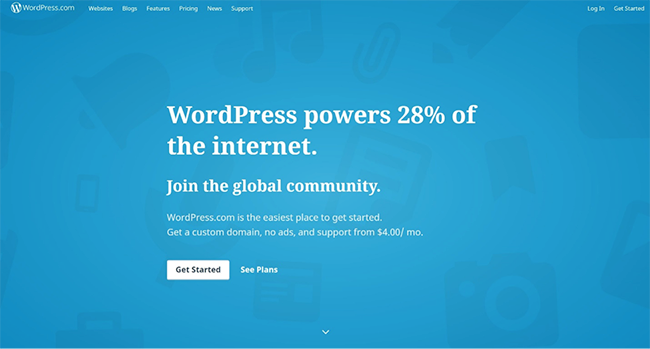
- Todoist: You’ll Save Time
We’re living in a fast-paced, always-on environment, where people are always pressed for time. That makes time one of the most valuable things that we have. If you can show your audience that your service or product will save them time, then that’s a great ad angle to lean on.
For instance, Todoist, a productivity app, focuses on time-saving by showing people that they can accomplish more every day. You can take a simple approach by saying things like “don’t waste time” or telling your audience that they can build something “in minutes.”

Showing your audience that they can save time means that you’re also proving you can make their lives a lot easier.
- Netflix: There’s Nothing to Lose
Sometimes, the easiest way to convince your audience that they should buy from you is to show them that there’s no real downside.
While customers frequently examine offers, looking for what’s in it for them, they’re also watching for anything that would diminish the benefits that they can access. When we see something that seems to be a great deal, we often ask ourselves, “what’s the catch?”
For instance, Netflix reminds you that not only can you join the company free for a whole month, but you have the option to cancel your subscription at any time, so you’re not locked in:
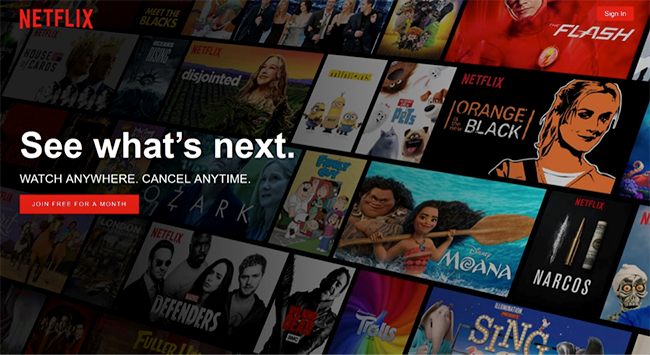
- T-Mobile: Save Money
Finally, no matter what your target audience looks like, you know that they’re going to want to save money. Because of this, the “save money” angle is one of the most powerful ways to hook new customers. Show your audience how much they can save by interacting with you.
This could mean quoting the amount that another company saved during a case study with your brand. Alternatively, you could just highlight a simple statistic like “save up to 15%”.
In these comical advertisements from T-Mobile, the company addresses the demand to save money with phrases like “don’t pay more.”
Creating the Right Ad Angles
Every ad has an angle, whether you realize it or not.
Once you get used to the concept of marketing hooks, you’ll find that it’s much easier to figure out how to speak to your audience and deliver the kind of results that they’re looking for.
Examine your audience, your industry, and your competition, and plan to put a few different ad angles to the test based on what you learn. Measure the results in terms of engagement and customer interest and use what you discover to plan and optimize your future campaigns.
The right ad angles will ensure you can always grab your customer’s attention – hook, line, and sinker.
